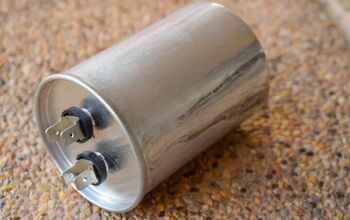9 Gardening Tips For Seniors

While you can garden at any age, certain aspects of it become harder as you get older. Gardening is a strenuous hobby, but it’s also quite rewarding. That’s why we put together a list of gardening tips for seniors that make it safer and easier.
It’s safer and easier to garden as a senior if you use raised beds and tall pots. This makes it easier to prune your plants and harvest fruits and vegetables. Seniors can also avoid unnecessary strain if they declutter their gardens and replace stubborn annuals with hardy perennials that will come back yearly.
Place some seats and benches throughout your garden to take breaks as needed. This can reduce physical stress, and it also lets you soak in your hard work. Follow along as we explore 9 essential gardening tips for seniors.
How To Garden As You Age
1. Keep It Simple
The best thing a senior gardener can do is simplify their garden. While vast gardens are rewarding, they can be hard to keep up with and maintain. The more plants you have spread out over a large area, the more drained you will become while gardening.
Think about which plants you have had the most success with, and stick to those. For example, hardy perennials are dependable and relatively easy to take care of. You may want to avoid plants that you’ve never planted before.
That’s especially true if they aren’t native to your climate zone, as they are more likely to struggle. Many seniors also avoid fruit and vegetable-bearing plants. Taking care of them and picking the vegetables in time is physically demanding, no matter what your age is.
2. Use Raised Beds
Every senior gardener should consider investing in some raised beds. Raised beds can save your knees and back a lot of stress while gardening. You don’t need to bend over nearly as far, and it can speed up your watering schedule.
Raised beds carry many benefits, such as great drainage, easy access, and deep root networks. It’s also much easier to protect your plants from pests in raised beds. Plants are less susceptible to pests in raised beds, and they’re much easier to treat if they get infested.
You also don’t have to worry about weeds nearly as much with a raised bed. This cuts down on yard work and provides peace of mind throughout the spring and summer. Raised beds are somewhat pricey, but they are worth the cost. You can also build a raised bed out of spare wood and aluminum sheets.
3. Garden Seating
Does your garden have any seating options? Not only is it fun to sit in your garden and enjoy the view, but garden seating is also helpful for seniors. While gardening, it’s easy to become fatigued and sore, especially on hot days.
You can make this much easier for yourself if you place some benches and chairs in your garden. This gives you the chance to sit down, take a break, catch your breath, and regroup. Garden seating also comes in handy when you invite your friends and family over.
After all, what good is a garden if you can’t sit down and enjoy it with your friends and family? You can even bring some chairs outside from inside your home if you don’t want to buy new seats.
4. Choose Low-Maintenance Plants
It’s no secret that some plants are harder to care for than others. Some plants aren't worth the hassle for seniors, whether it needs a rigorous watering schedule or frequent pruning. For example, hydrangeas and azaleas are hard to keep alive in some climates and require lots of water.
Conversely, low-maintenance plants like marigolds, zinnias, lavender, and ferns are easy to care for. Look for plants that don’t require excessive pruning and water.
It’s also important to research which plants will thrive in your climate zone. Plants native to your climate zone often require less maintenance than plants that thrive in different weather patterns. For example, it takes a lot of work to make a tropical plant thrive in a cold, dry climate.
5. Grow Vegetables In Containers
Growing vegetables is quite rewarding, but it takes a lot of work. Many variables, such as soil conditions and pests, make growing vegetables difficult and unpredictable. Senior gardeners can save themselves lots of time and stress if they grow vegetables in containers.
Containers provide more control and freedom over your vegetables as opposed to growing them in the ground. You can easily grow squash, peppers, spinach, cucumbers, and eggplant in a container or pot. That makes it easier to protect your vegetables from pests and diseases.
It’s also much easier to harvest your vegetables in a container, since you don’t have to bend down as far. Better yet, you can grow your potted vegetables indoors and keep them elevated to make the process easier. All you need is some grow lights, soil, pots, and a humidifier to grow vegetables indoors.
6. Stick With Perennials
While you can still grow annuals, as a senior, it’s a great idea to cut back on them and prioritize perennials. Annuals like impatiens, verbena, and begonias are quite popular, but they require lots of work. That’s not a problem with perennials, as they come back each year, if you take care of them.
Conversely, you must plant annuals yearly, and that becomes less and less rewarding with age. Perennials come back yearly if you protect them from pests and weeds and fertilize the soil. It helps to put your perennials in a raised bed or tall pot, so they are easier to prune.
Pruning perennials helps ensure that they stay healthy and come back the following year. Irises, black-eyed Susans, ferns, and purple coneflowers are among the best low-maintenance perennials for senior gardeners. You can grow some perennials year-round if you grow them indoors.
7. Declutter Your Garden
Gardens are full of tripping hazards whether you’re 20 years old or 65 years old. Whether it be vines, weeds, loose bricks, or a hose, it’s all too easy to not see something and trip over it. That’s why it’s important to declutter your garden and create an accessible path.
Not only does this make your garden safer, but it also makes it look better. It’s a great idea to coil your hose and put it in the same spot daily when you finish watering. Prune plants that stick out into your garden’s walking path, so it’s easier to navigate the area.
Never leave gardening tools on the ground, like trowels and shovels. It helps to keep a long broom and dustpan in or near your garden. That way, you can easily sweep away spilled soil and fertilizer to reduce the chance of slipping.
8. Take Notes
Keeping track of what each of your plants needs is essential to help your garden thrive. Understandably, it can be hard to memorize the nuances of each of your plants, whether you’re a senior or a young adult. You can save yourself some time and trouble if you take notes about what your plants need to thrive.
Include information like their watering needs and make notes of when you last fertilized your plants. Some seniors even create labels while gardening, much like what you see at zoos and plant sanctuaries. Otherwise, you can even keep notes on a tab in your phone or a notebook.
This also comes in handy if you must hire someone to take care of your plants while you go out of town. That way, your house sitter can quickly identify your plants and water them accordingly.
9. Use A Wagon
It’s all too easy to underestimate how physically demanding gardening can be. Carrying around plants, fertilizer, soil, and watering cans will eventually strain your back, arms, and knees. Seniors can avoid unnecessary pain if they invest in a wagon to put all their gardening supplies in.
This can save you plenty of trips back and forth, and it can help you stay organized. Load your wagon with everything you need for the day and haul it around your garden. This is usually a better option than a wheelbarrow, as wagons are easier to pull.
Summing It Up
Seniors can make gardening easier if they use raised beds and take advantage of garden seating. Put all your gardening supplies for the day in a wagon, so you don’t have to make so many trips back and forth. Simplify your garden, stick to perennials, and look for low-maintenance plants that don’t require much pruning and water.
Related Guides:

Nick Durante is a professional writer with a primary focus on home improvement. When he is not writing about home improvement or taking on projects around the house, he likes to read and create art. He is always looking towards the newest trends in home improvement.
More by Nick Durante


























